Advanced Technology Drives 40 Years of Manufacturing
Mazak has been manufacturing machine tools in Florence, Kentucky for 40 years. The growth and development of the production technology deployed in this plant reflect the most important advances in manufacturing during this span—from enhanced flexible manufacturing systems and multi-tasking part processing to automation and digital-driven manufacturing.
Share




Mazak has been manufacturing machine tools in the United States for 40 years, and definitely not the same way or using the same technology it did when it first opened its 12,000-square-foot factory in Florence, Kentucky in 1974. For Mazak North America, its advancements in manufacturing technology (machine tools and automation) have promoted the success of its customers, while also shaping the company’s operations into what they are today—an 800,000 square-foot, five-building manufacturing campus with the capacity to produce 200 machine tools per month, as well as the resources to design and export them.
Evolving FMS Technology
For its first official machining operations, Mazak incorporated an FMS (flexible machining system) with four of the company’s own machining centers and wire-guided vehicle. More noteworthy, the system marked the launch of Mazak’s Production-On-Demand concept, which enables it to quickly react to customer demands. This concept has also proven to be the driving force behind much of this builder’s development of advanced machine technology.
At the time, Mazak’s production was about 20 machines per month. Then, in 1990 and in accordance with its business practice of continuous investment and improvement, Mazak replaced this first FMS with one that consisted of eight H800s, which were, at the time, the company’s most advanced horizontal machining centers (HMCs). This move was part of a substantial expansion of its manufacturing facility in Florence.
With this new FMS, Mazak gained flexibility. The facility had progressed from producing only two machine models to producing two- and three-axis lathes, mill centers (basically a lathe with some milling and drilling capability and a C-axis), vertical machining centers and HMCs—a sampling of machines from each of the company’s product lines at the time. Output jumped to about 100 machines per month.
The state-of-the-art FMS initially incorporated 30 pallets within a Mazak-developed Palletech Manufacturing System. Pallets moved from one HMC to another via a rail-guided vehicle instead of a wire-guided one. Then, because of the system’s flexibility, the number of pallets could be expanded to 144, thus enabling it to build a wider variety of machine components. Significantly, the FMS was often processing job lot sizes of only one or two pieces.
In 2000, Mazak again invested in and improved upon its FMS technology by replacing the eight H800 HMCs with four FH8800 HMCs, which represented the company’s most advanced technology in terms of power and speed.
Whereas the original H800s had 35-hp/4,500-rpm spindles, the FH8800s were equipped with spindles of 50 hp/10,000 rpm ratings. These machines delivered a rapid traverse speed of 1,575 ipm and a tool change time of 1.8 seconds, compared to the 708-ipm traverse speed and 4 sec tool change time of the machines that were replaced. These improvements compelled Mazak to change part processing strategies in terms of tooling, fixturing and machining parameters to use the technology to its full potential.
For example, the increased power and speed of these HMCs enabled Mazak to use more inserted tooling to boost cutting speeds and feeds, thereby reducing cycle times by 30 percent and decreasing non-cutting time.
It is important to note that Mazak significantly raised output, yet did so with half the number of machines than on the older FMS. The Florence plant was now producing a wider variety of machine models. Production moved up from 100 machines per month to 130 machines per month. Machine tool headstocks, carriages, turret bases, turret, tailstocks, vertical and horizontal headstocks, index tables and tool magazine frames all came out of this FMS.
Moving To Multi-Sided Machining
Another early FMS underwent a similar transformation. Originally installed in the 1980s, this FMS consists of traveling column HMCs equipped with indexing tables that provided four-sided machining. These machines processed the bases and beds of all Mazak machines built in Florence. This FMS was the predecessor to Mazak’s introduction of five-sided and eventually full five-axis machining technology at the Kentucky factory.
When this FMS was first revamped, four new Versatech V-100 vertical machining centers (VMCs) with head changing capability replaced the traveling column machines. A rail-guided vehicle moved work in and out of the V-100s from a vertical stocker system for continuous production. With these VMCs in place, The FMS now produced parts for 130 machines per month, whereas the original HMCs produced parts for 30 machines per month.
The V-100 head-changer capabilities eliminated the need to flip parts or set them up on angle plates to access all sides for machining. This advantage was especially beneficial for processing large, heavy components. The ability to change the heads for either a vertical or horizontal tool orientation enables the machining of five sides of bases and beds in fewer setups. This change significantly reduced overall processing time. Moreover, bases and beds could be machined in the same orientation needed for subsequent assembly operations. This avoided further manipulation of these massive parts.
Mazak then took its V-100 machine technology to a new level and eliminated the head-changer capability. In its place, the company incorporated a five-axis articulating head technology into the Versatech V-140N.
This head could automatically present cutting tools to the part in any orientation for accessing features to be machined. Instead of exchanging a horizontal and a vertical head (which took several minutes), articulating heads index in a matter of seconds. This upgrade reduced non-cutting time reduction by 58 percent for its bases and beds.
The Emergence of Multi-Tasking
Mazak became a pioneer of multi-tasking technology, the development of machines with turning, milling, drilling, tapping and boring capabilities, as well as being equipped with second turning spindles, multiple tool turrets, Y-axis capability and tilt/rotary milling spindles and worktables drastically changed the face of manufacturing and part processing.
Multi-tasking meant parts could be completed in single setups to achieve what the company termed its Done-In-One processing. Machining companies could now produce more with less equipment, while doing so with fewer part processes and less fixturing to slash overall part cycle times and improve part accuracies.
Mazak’s first significant application of its multi-tasking technology happened in 2001 with the installation of three Integrex 300 SY Multi-Tasking Machines within a Palletech Manufacturing Cell. Featuring second turning spindles and Y-axis capabilities, these machines turned, milled, drilled and tapped parts. The machines were outfitted with gantry loaders that moved parts from pallets in the Palletech system, which supplied work to all three machines.
The Integrex 300SY machines processed many of the company’s cylindrical parts and some cast parts such as ballscrew housings. The cell not only boosted machine utilization, increased throughput and practically eliminated WIP, but it also reduced part processes by 39 percent and overall part cycle times by 55 percent.
In 2006, Mazak added more multi-tasking technology. An Integrex e-1060V Multi-Tasking Machine joined the FH8800 FMS, thus enabling it to take on the work of an old vertical turning lathe (VTL).
The e-1060V technology enables the company to use the same 144 pallets for the existing FH8800s to bring large-diameter parts into the new Integrex for turning operations and five-axis milling. The company could now process parts in one setup instead of the previous two or three.
Significantly, the Integrex e-1060V represented one of Mazak’s first implementations of its Done-In-One part-processing concept. For the FH8800 FMS, Done-In-One capability reduced overall lead times, material handling and number of setups. The cell gained about 106 hours of machining time.
Large Part Processing
Mazak’s most recent manufacturing cell processes the company’s machine tool headstocks. The cell incorporates some of the latest machine tool advancements, enabling it to combine different types of machine tools/processes within the same manufacturing cell.
Mazak engineered this capability through the matched designs of its pallets and pallet receivers within the Palletech System. In the headstock cell, for example, the system’s pallets can go from two Horizontal Center Nexus (HCN) 8800 HMCs to a very different Orbitec 20 Large-Part Machining Center and to an Integrex e-1060V Multi-Tasking Machine.
Each machine brings its specific capabilities to the cell and enables it to process all headstock designs, including the smallest and largest lathe headstocks to the different vertical and horizontal headstocks. For example, the Orbitec features the company’s innovative head design for processing big, complex parts such as valves for the oil and gas industry. This design enables the parts to remain stationary, thus eliminating the need to rotate or reposition them.
For Mazak’s cell, the Orbitec 20 does all part boring operations. Its feedout head also helps reduce the need for specialty tooling, such as 300mm and 400mm boring bars that must operate at lower rpms when used on conventional machines. The Orbitec is able to run these tools much faster. The benefit is reduced tool inventory and fewer tool changes because one boring bar can process bores in a wider diameter range.
Prior to this latest cell, headstock work was split between one Integrex e-1060V and the FH8800 machines within their FMS. The new cell allows the company to dedicate that FH8800 FMS to processing turret bases and carriages. Also for this new FMS, Mazak took a cellular approach so that it could process many families of similar components to meet the company’s current production of 200 machines per month, depending on product mix.
More Automation
In its Florence factory, Mazak has demonstrated a proactive willingness to apply automation to improve its operations. In 2005, for example, the company opted for articulated standalone robots for some of production machines in place of linear-type gantry robots. The standalone robots enable Mazak to automatically load a wider range of part types and much larger ones. This is possible because the robots can maneuver parts into the machine chucks, then transfer the parts to the subspindle and unload them when complete.
For Mazak, these automated, single-machine cells replaced the older Integrex 300SY machines for greater processing flexibility and productivity. For example, a new Integrex e-500HS Multi-Tasking Machine and e-bot 720 cell not only provided larger part processing capability, but it also reduced processing time by 60 percent and decreased cycle time by 66 percent. The cell increased production capacity by 265 hours compared to the older cell.
As with the Integrex e-500HS cell, combined the same type of standalone robot automation with two recently installed Integrex 300 and 400 Multi-Tasking Machines. Although these cells are on a smaller scale, they incorporate what Mazak terms “continuous automation.”
Though robots are typically used simply to load and unload parts, Mazak has the robots also change over the machines from one job to the next. For example, after a batch of parts is completed, the robots change the chuck faceplates for a different job. To accomplish this, Mazak had to design robot end-effectors and work with its suppliers to design chucks that accept interchangeable faceplates. This development is now available to customers as an accessory.
MTConnect for Machine Monitoring
One of the most recent technology developments adopted by Mazak is MTConnect. MTConnect is an open, royalty-free standard intended to foster greater interoperability between manufacturing devices and software applications.
Mazak has been a firm supporter of the MTConnect protocol since its inception. The company offers all of its machine tools with MTConnect compatibility. Currently, more than 100 Mazak customers are at various stages of MTConnect integration within their facilities. Approximately 300 machines within a wide range of model types are involved.
In operation since late 2013, Mazak’s MTConnect-enabled machine monitoring system has yielded significant benefits, initially by uncovering some easily fixed inefficiencies. The company almost immediately increased uptime by 6.7 percent across the 15 machines that are fully integrated into the system. Taken together, these adjustments have yielded a 17 percent improvement in utilization for the monitored machines so far. Plans call for virtually all the manufacturing equipment at the plant to be integrated using the MTConnect protocol.
Over and above these benefits is the advantage of having a monitoring system that takes the guesswork out of tracking machine utilization. As a common data format, MTConnect makes it possible for a manufacturing company to capture and analyze data about machine performance.
Value to Customers
Manufacturing in the United States is important to Mazak because it has given the company an opportunity to develop, test and refine production technology that has resulted in more capable, more affordable machine tools for its customers. First-hand experience with advanced manufacturing concepts has given the company insights that it has passed on to customers. A policy of continuous improvement and investment has shown Mazak the way to guide its customers to higher productivity and reduced costs
Having manufacturing operations near its local markets has helped Mazak recognize and respond to the same challenges and opportunities that its customers face. Maintaining its manufacturing operations has also honed the company’s service and application support for customers.
Mazak constantly evaluates and re-evaluates its operations and, in particular, the productivity of its equipment. The company’s record shows that it is willing to quickly replace functional machines and systems with those that are more advanced. The constant goal is to offer greater flexibility and higher output to fulfill customer demand.
Related Content
Lean Approach to Automated Machine Tending Delivers Quicker Paths to Success
Almost any shop can automate at least some of its production, even in low-volume, high-mix applications. The key to getting started is finding the simplest solutions that fit your requirements. It helps to work with an automation partner that understands your needs.
Read MoreInside a CNC-Machined Gothic Monastery in Wyoming
An inside look into the Carmelite Monks of Wyoming, who are combining centuries-old Gothic architectural principles with modern CNC machining to build a monastery in the mountains of Wyoming.
Read MoreHigh RPM Spindles: 5 Advantages for 5-axis CNC Machines
Explore five crucial ways equipping 5-axis CNC machines with Air Turbine Spindles® can achieve the speeds necessary to overcome manufacturing challenges.
Read MoreCNC Machine Shop Honored for Automation, Machine Monitoring
From cobots to machine monitoring, this Top Shop honoree shows that machining technology is about more than the machine tool.
Read MoreRead Next
Data-Driven Manufacturing Moves Ahead at Mazak
“We thought we knew what our utilization was, but now we know for sure.
Read MoreBuilding Out a Foundation for Student Machinists
Autodesk and Haas have teamed up to produce an introductory course for students that covers the basics of CAD, CAM and CNC while providing them with a portfolio part.
Read MoreSetting Up the Building Blocks for a Digital Factory
Woodward Inc. spent over a year developing an API to connect machines to its digital factory. Caron Engineering’s MiConnect has cut most of this process while also granting the shop greater access to machine information.
Read More
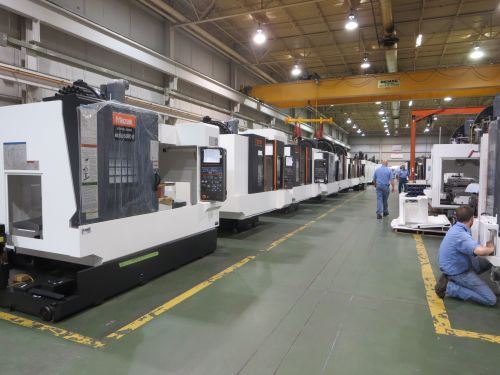
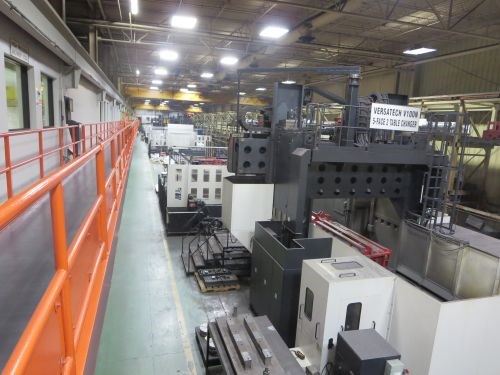
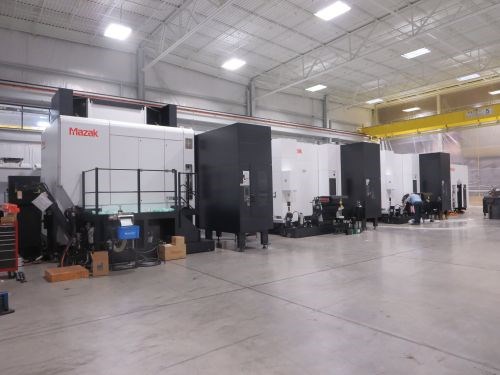
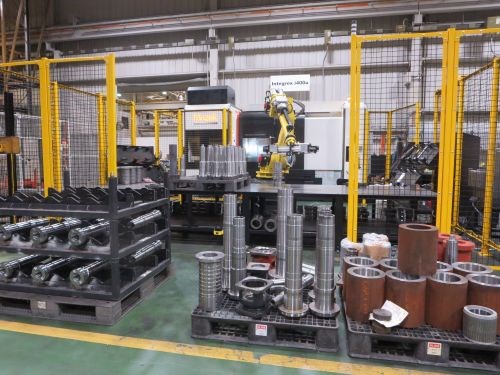
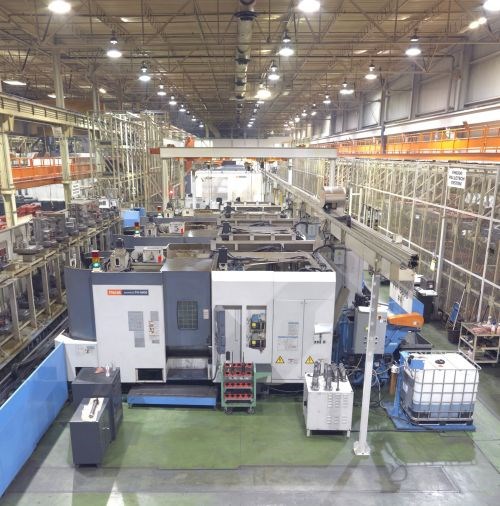





























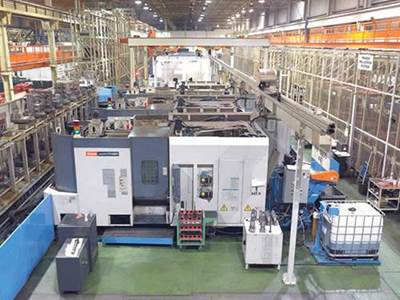


.jpg;maxWidth=970;quality=90)